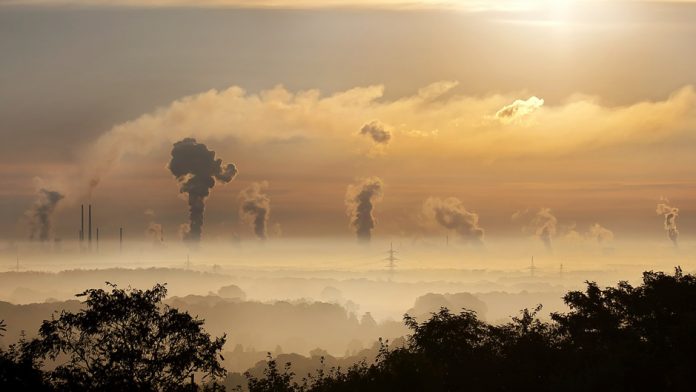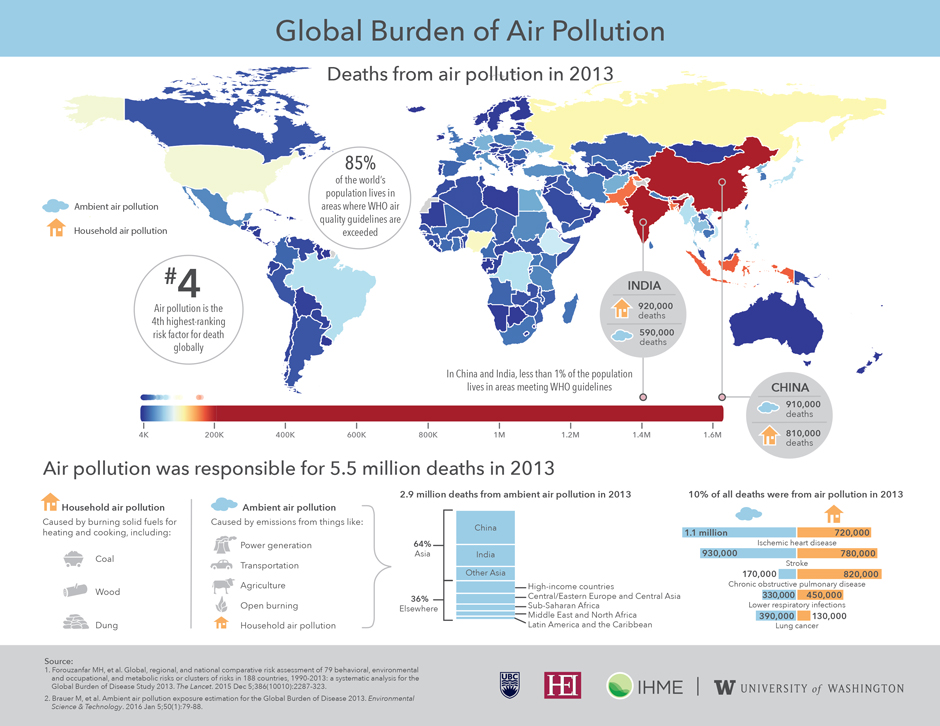When the Institute for Health Metrics and Evaluation presented results last week to the American Association for the Advancement of Science (AAAS), the numbers were staggering: 5.5 million lives end prematurely each year due to breathing polluted air.
This puts air pollution second only to smoking as the leading cause of death worldwide.
The World Health Organization (WHO) set a guideline for a maximum 25 micrograms per cubic meter of particulate matter in the air we breathe, but 85% of the global population lives and breathes in areas with air so polluted that these levels are exceeded. In China and India, the countries with the highest number of deaths attributed to air pollution, the concentrations at this time of year average 300 micrograms per cubic meter – that’s 12 times higher than the WHO recommendation.
Unless more aggressive targets to reduce pollution are met, these statistics are projected to rise.
Prof. Michael Brauer, professor of medicine (population and public health) and co-author on the study, hopes that the results will provide a sense of urgency and catalyze the adoption of clean technologies.
Prof. Michael Brauer explains how deaths linked to air pollution are projected to rise unless more aggressive targets are met
Video courtesy of UBC Public Affairs
While air pollution can happen naturally during events like dust storms and forest fires, the primary sources are from human activity, including motor vehicles and manufacturing facilities. Coal is the largest contributor to poor air quality in China; efforts are concentrated there to set aggressive new targets to reduce pollution.
Beyond outdoor air pollution, household air pollution is an urgent problem in the developing world, where people burn wood, dung, and plant matter indoors to cook their food. In India, household pollution is an even larger problem than outdoor air pollution, and changing these habits in poor households that cannot afford cleaner alternatives will be difficult.
Make no mistake, however – issues related to air quality are not restricted to the third world. Between the United States and the European Union, 300,000 deaths are attributed to air pollution in these affluent countries. Worsening air conditions in China also affect the air on the west coast of North America.
Breathing polluted air is linked to many medical conditions, including cardiovascular disease (eg. ischemic heart disease and stroke), chronic obstructive pulmonary disease (COPD), lower respiratory infections (eg. pneumonia), and lung cancer.
Infographic courtesy of the University of British Columbia
Click the image for to enlarge, or here for the full-sized version









































